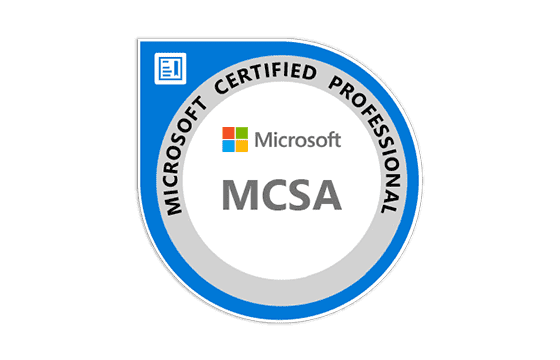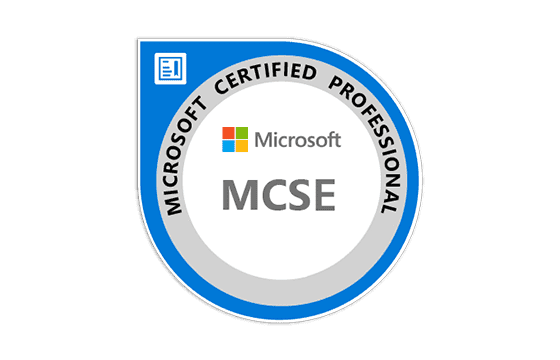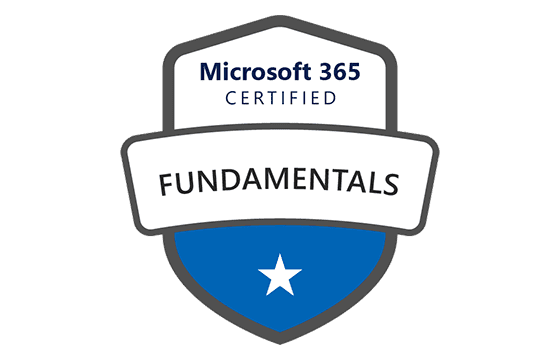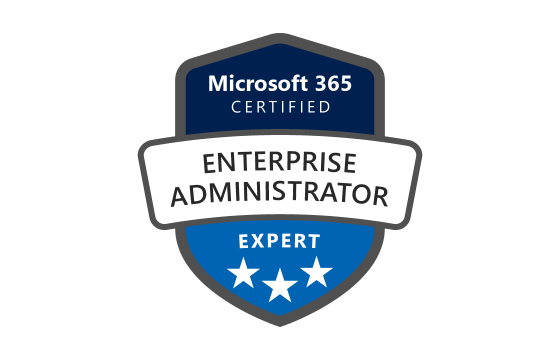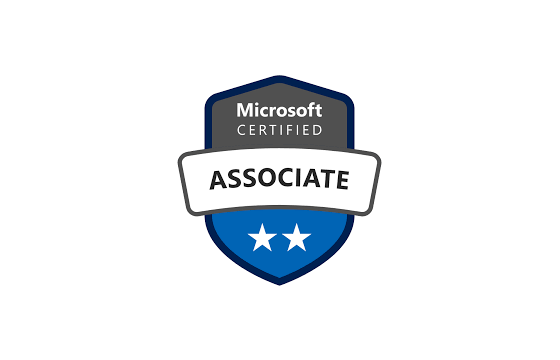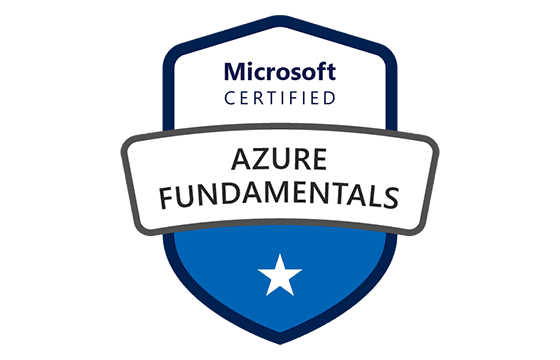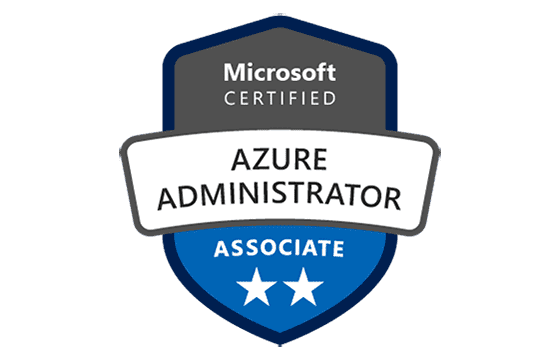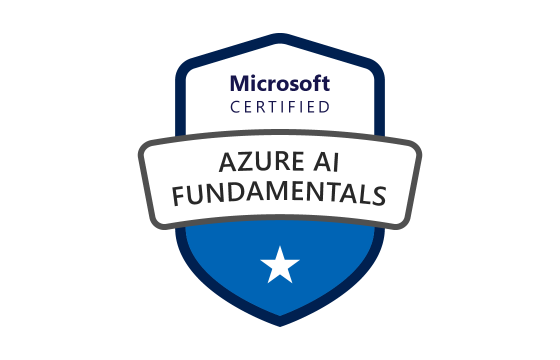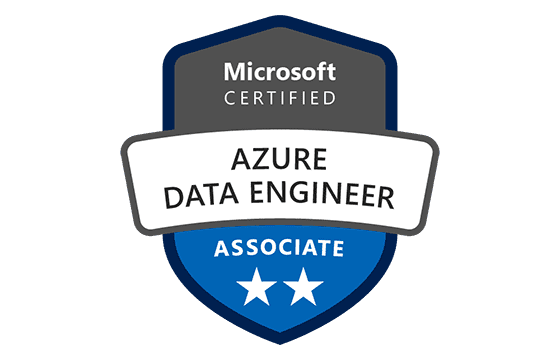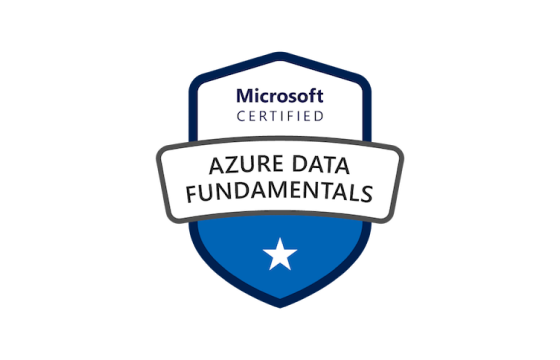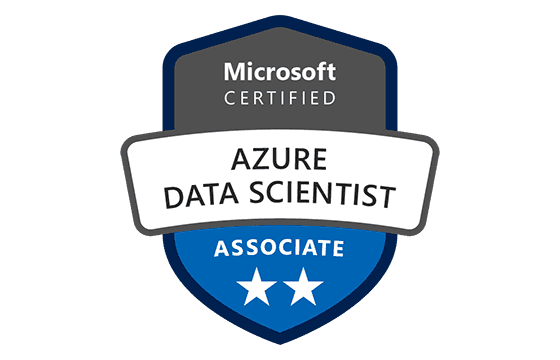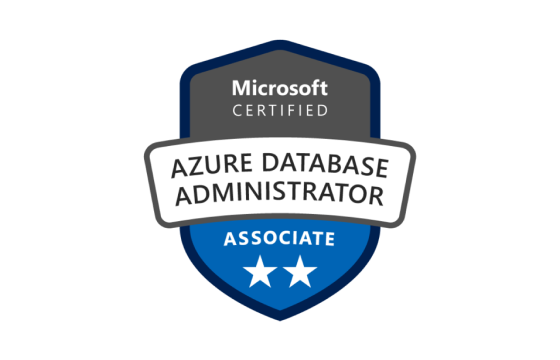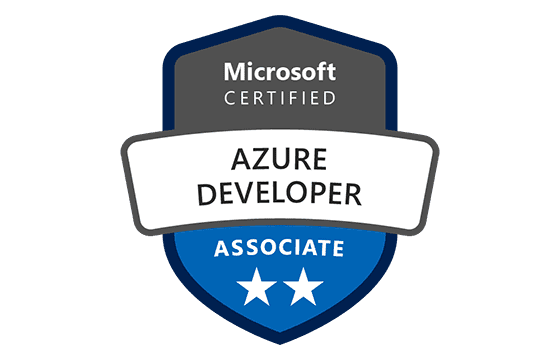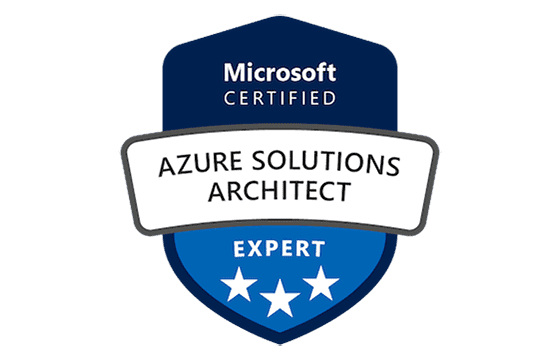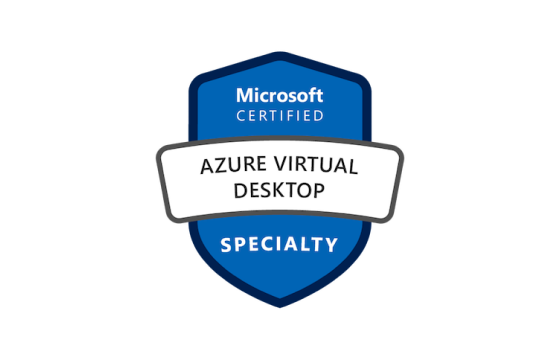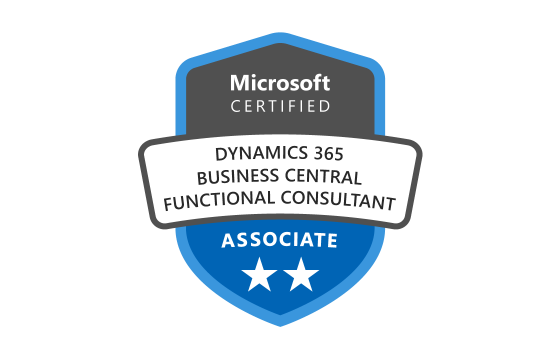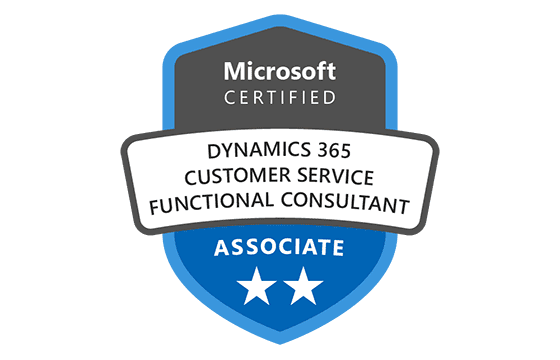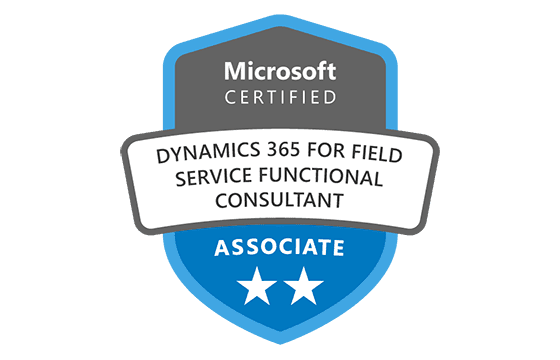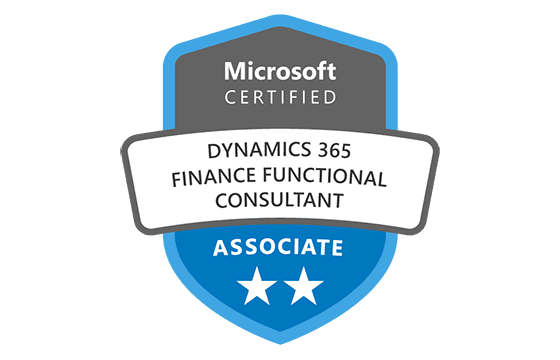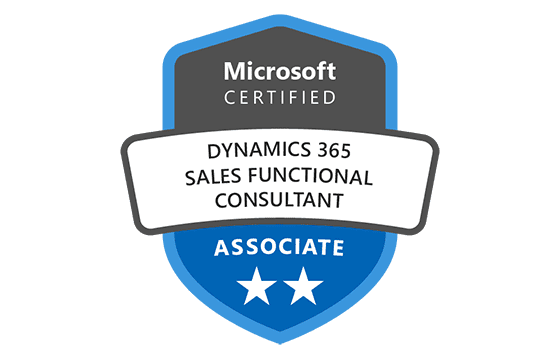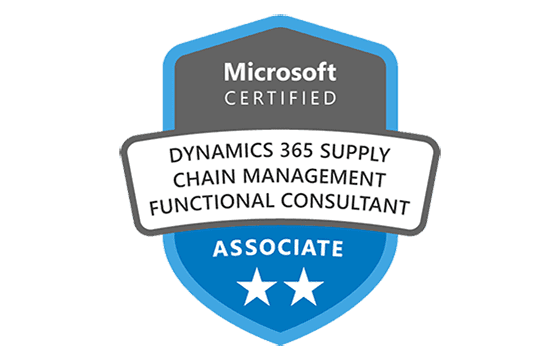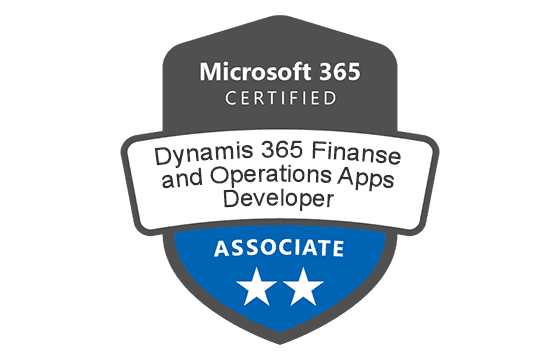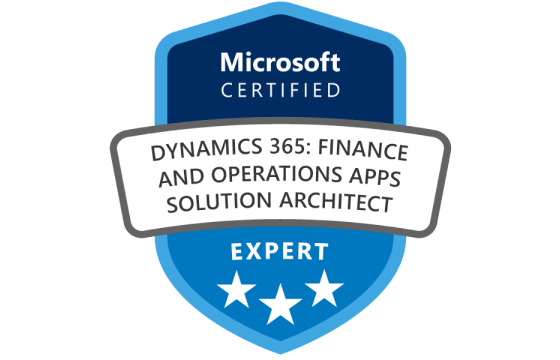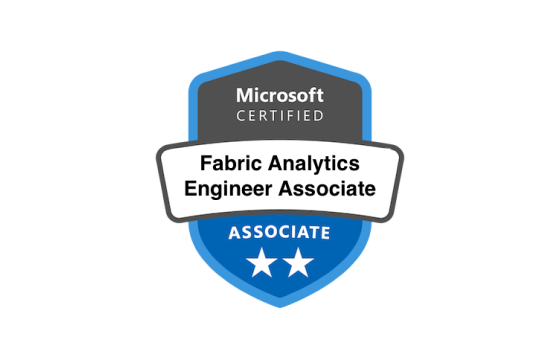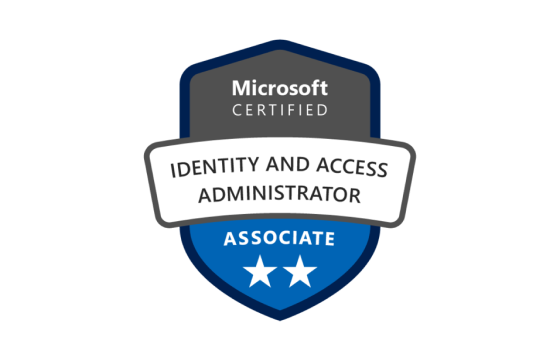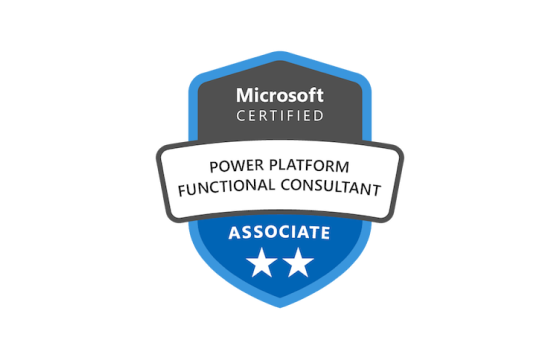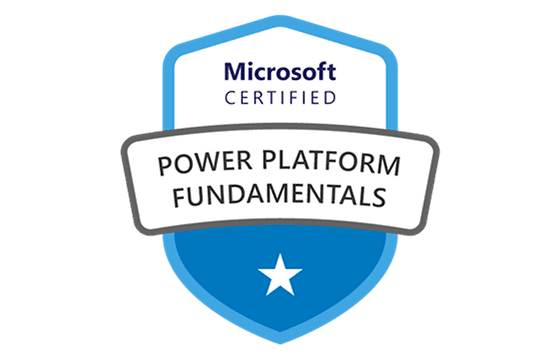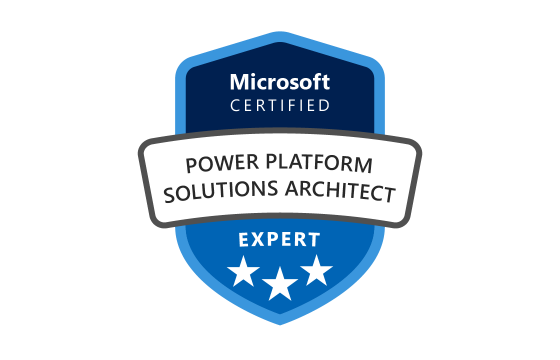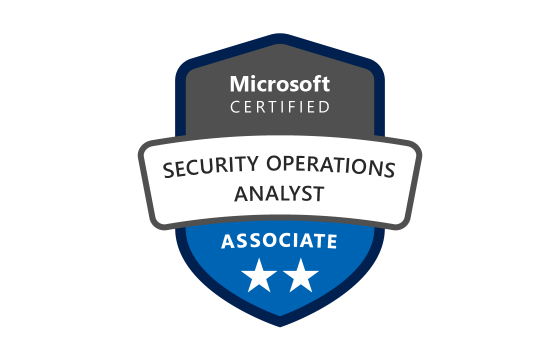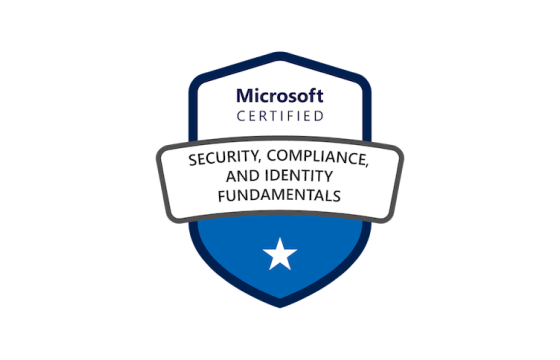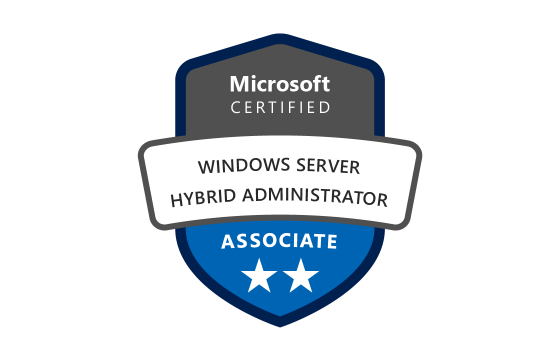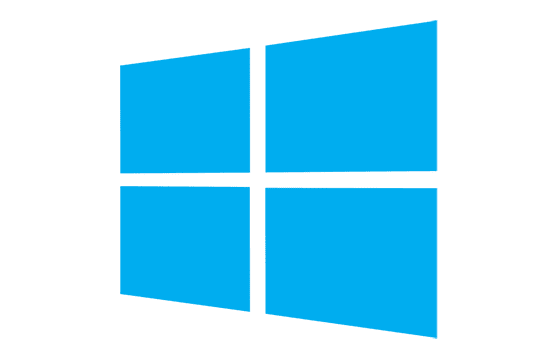Pass Your Microsoft 70-659 Exam Easy!
Microsoft 70-659 Exam Questions & Answers, Accurate & Verified By IT Experts
Instant Download, Free Fast Updates, 99.6% Pass Rate
Microsoft 70-659 Practice Test Questions in VCE Format
Archived VCE files
| File | Votes | Size | Date |
|---|---|---|---|
File Microsoft.TestInside.70-659.v2011-11-07.by.Jeanne9.81q.vce |
Votes 1 |
Size 230.24 KB |
Date Nov 28, 2011 |
File Microsoft.BrainDump.70-659.v2011-10-28.82q.vce |
Votes 1 |
Size 189.19 KB |
Date Oct 30, 2011 |
File Microsoft.BrainDump.70-659.v2011-09-11.by.MCSE2K8.82q.vce |
Votes 1 |
Size 189.76 KB |
Date Sep 11, 2011 |
File Microsoft.Dump4Certs.70-659.v2011-06-17.by.TR.82q.vce |
Votes 1 |
Size 166.01 KB |
Date Jun 21, 2011 |
File Microsoft.Certdumps.70-659.v2011-04-20.by.Oliver.91q.vce |
Votes 1 |
Size 606.54 KB |
Date Apr 19, 2011 |
File Microsoft.Dump4Certs.70-659.v2011-03-14.by.JM.110q.vce |
Votes 1 |
Size 204.67 KB |
Date Mar 14, 2011 |
File Microsoft.Dump4Certs.70-659.v2011-03-12.by.Largo.60q.vce |
Votes 1 |
Size 47.25 KB |
Date Mar 13, 2011 |
File Microsoft.PassCert.70-659.v2010-09-16.by.ElSanto.50q.vce |
Votes 1 |
Size 126.88 KB |
Date Sep 26, 2010 |
Microsoft 70-659 Practice Test Questions, Exam Dumps
Microsoft 70-659 (TS: Windows Server 2008 R2, Server Virtualization) exam dumps vce, practice test questions, study guide & video training course to study and pass quickly and easily. Microsoft 70-659 TS: Windows Server 2008 R2, Server Virtualization exam dumps & practice test questions and answers. You need avanset vce exam simulator in order to study the Microsoft 70-659 certification exam dumps & Microsoft 70-659 practice test questions in vce format.
Mastering Microsoft 70-659: Your Roadmap to Server Virtualization Success
The journey to the 70-659 Microsoft Server Virtualization exam often begins with confusion, uncertainty, and many questions about what the exam covers and how to prepare. People hear so many different ideas about virtualization and Windows Server technologies that they sometimes feel lost. The goal of this series is to make the process clear, friendly, and easy to understand, even for someone starting with basic knowledge. Many professionals want this certification because it proves they understand virtualization using Windows Server 2008 R2, Hyper-V, and related tools. The exam is respected in the IT world, and many companies look for people who understand virtual machines, storage, networking, and system management. Passing the exam is not only about reading theory. It is about understanding how virtualization works and how real environments behave. A person can memorize answers, but true success comes from learning the core ideas and knowing how to apply them.
Understanding the Path to the 70-659 Microsoft Server Virtualization Certification
The first step is learning what virtualization really means. Years ago, companies used physical servers for every service. One server for mail, one for database, one for web, and so on. That meant more machines, more electricity, more cooling, more hardware failures, and more cost. Virtualization changed that. It allows one physical machine to run many virtual machines. A single server could host many services by dividing its hardware into smaller parts. This saved money, improved performance, and delivered flexibility. Microsoft introduced Hyper-V as part of Windows Server to support this idea. Hyper-V makes it possible to create virtual machines, assign memory, connect storage, and manage networks without buying dozens of physical computers. The 70-659 exam checks how well a person understands these concepts and how they work in real environments.
Before you can install Hyper-V, you need to know the hardware requirements. Not every machine can handle virtualization. The processor must support features like virtualization technology and data execution prevention. Without these, the server will not allow Hyper-V to run properly. The exam expects you to know how to check hardware support and how to enable settings in the system firmware. A candidate should feel comfortable looking at system properties, checking compatibility, and verifying BIOS settings. Many people forget that even powerful machines need the right options turned on. If virtualization technology is disabled in the BIOS, Hyper-V will not install. The exam tests these little details because they matter in real life.
Once the hardware is ready, the next task is adding the Hyper-V role in Windows Server. Adding a role sounds simple, but it involves planning. When Hyper-V is installed, the system becomes a virtualization host. That means the server needs the right drivers, network settings, and updates. The exam expects you to understand host and parent settings. The host system controls memory, processors, storage, and networking for all virtual machines running on it. If the host is not configured correctly, virtual machines may slow down or lose connectivity. Someone preparing for the certification must learn how to set up the host environment so virtual machines run smoothly.
Many people also use System Center Virtual Machine Manager. It helps manage multiple hosts and many virtual machines at the same time. The exam expects you to know what requirements are needed for this tool. The idea is simple. When there is only one virtual machine, you can manage it from the server console. But large companies sometimes have hundreds of virtual machines. They need a tool that organizes them, monitors them, and helps with deployment. That is where Virtual Machine Manager becomes useful. The exam may ask how to install it, how to deploy agents, and how to manage virtualization across a large network. You do not have to be a master of every feature, but you must understand the basic purpose and setup.
Hyper-V can be installed in different ways. One method is using the full version of Windows Server with a graphical interface. Another is Server Core, which is a smaller version without a full desktop. Server Core uses fewer resources and often runs faster. Many administrators install Hyper-V on Server Core hosts to improve performance. The exam covers how to configure Hyper-V on Server Core, how to manage settings, and how to work without the usual graphical tools. Some commands may be needed for configuration, storage, and networking. It can feel difficult at first because many people are used to clicking through menus, but Server Core teaches that not everything needs a full interface. Sometimes,, a light and efficient system is better.
Storage configuration is another important part of the 70-659 Microsoft Server Virtualization exam. Virtual machines need virtual hard disks, and administrators have to decide which type to use. There are fixed disks, dynamic disks, and differencing disks. Every type has a different purpose and effect on performance. A fixed disk takes up full space from the start and gives stable performance. A dynamic disk grows when needed and saves storage, but it might be slower. A differencing disk allows changes while keeping a parent image untouched. Knowing when to use each type is essential. If you assign the wrong type, virtual machines might run slowly or run out of space. The exam will expect you to understand how to create and manage disks without confusion.
Networking also plays a key role. Virtual machines cannot live in isolation. They need network access to communicate with other servers, users, and the internet. Hyper-V uses virtual networks to connect machines. There are internal, private, and external networks. They control how machines talk to the host and to each other. Some configurations require VLAN tags for security and organization. Others need MAC address pools to prevent conflicts. These may sound complicated, but once you understand the logic, it becomes clear. Virtual networks behave like physical networks, just without cables. The exam includes tasks such as creating virtual networks, connecting virtual machines, and managing traffic.
Remote management is another topic. Administrators cannot stand next to every server. They need tools that allow them to configure virtual environments from other machines. Hyper-V hosts can be managed remotely, but they need correct firewall settings, proper permissions, and the right management tools. Many people forget that remote management will fail if basic network rules are not set. The exam may include questions about enabling remote access, configuring management consoles, and handling firewall controls. With proper configuration, an administrator can manage hundreds of virtual machines from a single desk.
For many candidates, one of the hardest parts of the 70-659 exam is understanding how all the pieces connect. Hyper-V is not a single tool. It is a system of virtualization, storage, networking, processors, memory, agents, and remote access. If one part fails, everything can collapse. That is why Microsoft designed the exam to test real understanding, not just memorization. You must know how the host works, how to create virtual machines, how to manage networks, and how to handle storage. The exam covers installation, configuration, and maintenance. Once you understand these ideas, virtualization becomes easier and even enjoyable.
Setting up a lab environment is a powerful way to prepare. Even if you do not have many servers, you can install Windows Server in a test environment. Creating a small lab teaches more than books ever can. When you see virtual machines start, run, pause, and connect, the concepts become clear. Many learners discover mistakes and fix them, which gives confidence and skills. Lab work helps in troubleshooting and improves preparation for real questions. Since the exam assumes hands-on knowledge, lab practice is one of the smartest things to do.
Many professionals chase this certification because the IT field is moving toward virtualization and cloud technologies. Companies want experts who can manage many systems with fewer physical resources. Virtualization saves money, improves uptime, and supports growth. Organizations need people who understand how to build and maintain these environments. The 70-659 certification proves that you understand Windows Server virtualization and how to make it work. It shows employers that you can handle real challenges in technical environments. Even if someone wants to move into a private cloud or hybrid cloud later, this certification is a strong foundation.
Configuring Child Settings in a Virtualized Environment for the 70-659 Exam
When the host environment is fully prepared and Hyper-V is installed correctly, the next stage in understanding the 70-659 Microsoft Server Virtualization certification is learning how child settings work. The host is the foundation, but the child systems are the real reason virtualization exists. A child in a Hyper-V environment is a virtual machine that runs its own operating system and contains its own resources. It behaves like a separate server even though it shares hardware with others. The exam includes many topics related to child configuration because these machines represent the actual servers that businesses depend on. A virtual environment with a perfect host still fails if the child systems are not created or managed properly. Learning how to configure them the correct way is essential for both the exam and real-world work.
A virtual machine begins as a simple file, but once it is created and powered on, it lives as if it were physical hardware. It has a processor, storage, memory, network access, and an operating system. The 70-659 exam expects candidates to understand how to assign these resources wisely. Giving too much memory or too many processors to one virtual machine can starve others. Giving too little can cause slow performance. The administrator must know how to balance resources in an environment with many machines. Virtualization is a constant act of resource sharing. The physical server has a fixed amount of power, but the needs of the virtual machines change constantly. The exam checks whether you can think like an administrator who understands how to allocate resources intelligentlyMemory is one of the first settings configured for a child. In virtualization, memory can be static or dynamic. Static memory assigns a fixed amount, and the system does not go above or below that limit. Dynamic memory allows a virtual machine to start with one value and grow when needed. It gives flexibility, and it helps maximize the usage of physical memory. However, it must be used carefully. If every virtual machine grows at the same time, the host might not keep up. The 70-659 exam expects you to understand how memory allocation works, how to enable dynamic memory, and how to control maximum and minimum limits. A virtual machine that is allowed to use too much memory can reduce the performance of others. A virtual machine that is restricted too much can crash or struggle. Learning how to choose fair values is an important skill for passing the exam and for managing real environments.
Processor configuration is another area the exam focuses on. When a child machine starts, it needs CPU power to run tasks. Hyper-V divides processor cores among virtual machines. Sometimes a machine needs high performance for applications or database services. Other machines may only need light processing power. Administrators can assign how many virtual processors to use and how much weight each machine receives. Giving every virtual machine the highest priority seems helpful, but it can damage the balance of the entire environment. In real workplaces, a server hosting hundreds of virtual machines requires structured planning. If everyone gets maximum shares, nobody wins. The exam expects you to know how processor allocation works and how to plan it logically. Understanding the difference between virtual and physical processors helps manage the load.
Storage configuration is another major part of child settings. Virtual machines store data in virtual disks. Each disk acts like a physical drive inside the operating system. The way these disks are created affects performance, space usage, and flexibility. Some companies prefer dynamic disks because they grow as needed. Others prefer fixed disks because they offer stable performance and consistent throughput. Differencing disks creates a relationship between a parent disk and a child disk. This helps in labs and testing, because you can keep a clean image and make changes in separate layers without breaking the original. The 70-659 exam expects you to understand how these storage types work and when each one makes sense. An administrator must think about performance, capacity, and future expansion. Storage planning is one of the main responsibilities in virtualization.
Virtual machines sometimes need access to physical storage devices rather than virtual disks. This is when pass-through disks are used. A pass-through disk allows a virtual machine to use a real physical disk directly without a VHD file. It provides faster access in some scenarios but takes away flexibility. The virtual machine cannot move as easily because the disk is tied to a specific server. The exam may include questions about when pass-through disks are useful and how they differ from VHD-based storage. Understanding both options helps handle situations where performance or migration is important. A professional must learn how to choose the best method depending on the workload.
Snapshots are another important child setting that appears on the exam. A snapshot captures the state of a virtual machine at a specific moment. This includes memory, settings, and disk data. Many administrators use snapshots before making changes to a system. If something goes wrong, the machine can return to the previous state. Snapshots are powerful, but they must be used carefully. Too many snapshots slow down performance and take up extraa storage. They are not a permanent backup method. Candidates preparing for the 70-659 exam must understand how snapshots work and when they are appropriate. Managing snapshots, knowing how to apply them, and removing old ones are all part of responsible virtualization.
Networking inside child settings is another area of importance. A virtual machine needs connectivity to function. Without a network, it cannot communicate with other servers, clients, or the internet. Administrators must assign virtual network adapters and connect them to the correct virtual switches. The same machine might need multiple network connections, such as internal traffic for applications and external traffic for users. Misconfigured networking causes failures even when the virtual machine is working perfectly. Many new administrators forget that virtual machines do not automatically receive access simply because the host has a network. They must be configured properly. The exam expects an understanding of virtual network manager settings, network mapping, and how child virtual machines use the host’s network.
One subject that appears often in virtualization is control of storage paths. Modern environments use advanced storage systems where multiple paths exist between servers and disks. Multi-path input output, often called MPIO, allows servers to use more than one route to reach the same storage. If one path fails, another takes over. This increases reliability and performance. The exam expects knowledge of MPIO, how to enable it, and how virtualization uses it. If a server hosts many virtual machines, storage interruptions can affect everything. Learning how to maintain stability through path redundancy is part of a strong virtualization strategy.
Virtual machines need identification. Just like physical computers, they have unique identifiers, sometimes in the form of GUIDs. These help the system track disks, services, and configuration. If a virtual disk is moved, the identifier helps the system recognize it. The exam includes topics such as managing GUIDs and logical unit numbers, often called LUNs. LUNs appear in storage networks, and they help organize drives so servers can find them. A professional handling virtualization must understand how these identification systems work to avoid confusion. Without proper identification, storage systems might not mount correctly, and virtual machines might fail to boot.
Creating and copying virtual hard disks is also a part of child configuration. Sometimes an administrator has a physical machine that must be migrated into a virtual environment. In that case, the physical disk can be converted into a virtual disk using special tools. Once converted, it becomes a VHD file and can run as a virtual machine. The exam expects you to recognize that converting disks is a real task that administrators often do when moving old systems into a modern infrastructure. Migration is a normal part of technology, and virtualization makes it easier. Understanding how to copy and edit VHDs is part of this skill.
Once the child machine runs, maintaining it becomes important. It should receive updates, security patches, and performance improvements. Virtualization administrators sometimes forget that a virtual machine is still a full operating system. It needs the same care as a physical machine. The exam checks whether candidates understand that virtualization does not remove the need for system management. Administrators must check logs, monitor performance, and ensure that the virtual environment does not overload the hardware. A server hosting dozens of virtual machines must be watched carefully. Even small misconfigurations can multiply into bigger problems inside a shared platform.
Child settings form the heart of virtualization knowledge. Without this understanding, a candidate cannot manage real workloads. The exam covers configuring disks, networks, CPU, memory, and advanced storage. It also tests whether candidates can solve problems when something does not work. An administrator must know how to identify bottlenecks, fix slow performance, or determine why a system is not connecting to the network. Real work in server virtualization always involves troubleshooting, planning, and balancing resources.
Child configuration is not just a theory. When building a personal lab, new administrators learn how storage types affect performance, how memory grows or shrinks, how processors respond under load, and how virtual networks behave. A small lab can simulate real business environments. Creating a few virtual machines, connecting them, moving them, and storing them teaches more than reading pages of text. Practice builds confidence, and confidence turns into skill. The exam rewards practical understanding.
Although virtualization seems complex at first, it becomes easier with patience. Child settings can be mastered step by step. First, learn how to create virtual machines. The n understand resource allocation. Then study storage and networking. Each part builds on the previous one. Eventually, the entire picture becomes clear. Many professionals discover that virtualization is not just a technology. It is a method of solving problems, reducing costs, and improving efficiency.
Advanced Virtual Machine Management for the 70-659 Certification
After understanding how to configure child settings in a virtualized environment, the next step in preparing for the 70-659 Microsoft Server Virtualization exam is learning how to manage these virtual machines effectively. Creating a virtual machine is just the beginning. Once it is running, administrators must ensure it performs reliably, has access to the right resources, and can recover from issues without affecting the rest of the environment. Effective management separates those who pass the exam from those who only memorize theory. It is not enough to know what buttons to click; a candidate must understand why each step matters and how virtual machines interact with the host and with each other.
Monitoring is one of the most critical management tasks. Every virtual machine consumes physical resources such as memory, CPU, storage, and network bandwidth. Administrators need to track these metrics constantly. Without monitoring, one machine might consume too much memory and slow down other virtual machines on the host. The exam may include scenarios where a virtual machine experiences performance issues. Understanding how to check memory usage, CPU cycles, and disk I/O helps identify bottlenecks before they affect users. Even in a small lab environment, monitoring teaches how virtual machines compete for shared resources, which is an essential concept for passing the 70-659 exam.
Updates and patch management are another crucial part of virtual machine management. Each virtual machine runs its own operating system, which requires updates for security, performance, and stability. Administrators need to understand that updating one virtual machine does not automatically update others. The exam might test knowledge of managing updates in a virtualized environment, including how to schedule updates to avoid downtime and how to ensure that updates do not interfere with critical workloads. A professional must balance keeping systems secure with maintaining continuous operation, a common challenge in real enterprise environments.
Backup and recovery are fundamental concepts in virtualization management. A virtual machine can fail for many reasons: hardware failure, software corruption, misconfiguration, or accidental deletion. Administrators must know how to back up virtual machines efficiently and restore them when needed. Hyper-V provides tools for exporting virtual machines and creating checkpoints. Checkpoints allow administrators to save the state of a virtual machine at a particular moment, which can be restored quickly in case of errors. The exam may test the ability to choose between backups and checkpoints, understanding their advantages and limitations. Effective backup planning ensures that the organization can recover from unexpected problems without data loss or prolonged downtime.
Security is a constant concern in virtualized environments. Virtual machines can be exposed to malware, network attacks, or unauthorized access. Administrators need to implement security policies at both the host and the child level. This includes configuring firewalls, setting permissions, managing virtual networks, and applying antivirus solutions. The 70-659 exam expects candidates to know how to secure both the host system and the virtual machines. Ignoring security can compromise all virtual machines on a host, highlighting why security is always a priority. Professionals must understand the risks and know how to mitigate them without disrupting performance or functionality.
Resource optimization is another key aspect of managing virtual machines. As virtual machines share physical hardware, administrators must allocate memory, processors, and storage carefully. Some virtual machines may require high priority due to critical applications, while others may only need minimal resources. Understanding how to adjust resource allocation dynamically, how to prioritize workloads, and how to plan for future growth is part of virtualization management. The exam may test the ability to balance competing needs in a real-world scenario, simulating challenges administrators face every day.
Networking management is equally important. Virtual machines rely on virtual network adapters to communicate with the host, other virtual machines, and external networks. Administrators must understand how to configure virtual switches, assign network adapters correctly, and manage VLANs for security and isolation. The exam may include questions on network mapping, virtual LAN tagging, or troubleshooting connectivity issues. Knowledge of how virtual machines interact with the network helps ensure that services are available, reliable, and efficient.
Storage management in virtual machines also requires attention. Administrators must monitor disk usage, growth plan, and manage differencing disks and pass-through storage. They need to know how to convert physical disks to virtual disks and how to edit virtual hard disks for capacity or performance adjustments. The 70-659 exam evaluates whether a candidate can handle storage configuration, including creating, resizing, or migrating virtual disks. Real-world environments often demand quick problem-solving skills to prevent downtime and data loss.
Virtual machine replication is an advanced management task that adds resilience. Replication allows a virtual machine to be duplicated on another host, often in a different location. This provides business continuity in case of hardware failure or disaster. Administrators need to understand how replication works, how often it occurs, and how to restore replicated machines if necessary. The exam may test replication scenarios and disaster recovery planning. Virtualization is not just about efficiency; it is about ensuring that services remain available even in the face of unexpected events.
Automation and scripting help manage virtual machines more efficiently. While the exam focuses on practical knowledge, understanding how to automate tasks like creating multiple virtual machines, configuring settings, or applying updates can improve performance in real environments. Administrators can use scripting tools to save time and reduce human error. The exam may include questions that require logical thinking about automation and batch management, even if not expecting advanced scripting skills. Understanding the principles behind automation shows that the candidate is prepared for professional responsibilities beyond basic setup.
Troubleshooting is a critical skill for virtual machine management. Problems can arise from misconfigured settings, resource contention, networking issues, or storage failures. Candidates preparing for the 70-659 exam must be able to identify the source of a problem and resolve it efficiently. This includes understanding error messages, checking event logs, and performing systematic checks. A virtual machine that fails may affect multiple users or applications. Knowing how to restore functionality quickly demonstrates competence and readiness for real IT work.
Performance optimization is another area of focus. Administrators must ensure that virtual machines are running efficiently and that resources are not wasted. Techniques include balancing processor loads, adjusting memory settings, optimizing disk I/O, and monitoring network traffic. The exam may test knowledge of best practices to maintain performance under heavy workloads. Virtual environments are dynamic, and administrators must continuously monitor and tune systems to avoid degradation.
Integration with host services is a final consideration. Virtual machines often rely on host features such as storage pools, snapshots, Hyper-V integration services, and network services. Understanding how child systems interact with these host services ensures stability, reliability, and scalability. The exam may include questions about these interactions, emphasizing that virtual machines do not operate independently but as part of a larger ecosystem. Awareness of the dependencies between host and child systems is a hallmark of a skilled administrator.
By mastering virtual machine management, candidates build the skills needed to succeed in both the exam and professional practice. Monitoring, security, backups, networking, storage, replication, troubleshooting, and performance optimization form a comprehensive knowledge base. These areas overlap and influence each other. A change in one resource may affect another. Learning to balance these factors teaches candidates how to think critically and act responsibly in virtual environments.
High Availability and Performance Tuning for Microsoft Server Virtualization
Once virtual machines are created and managed, the next critical step in preparing for the 70-659 Microsoft Server Virtualization exam is learning how to ensure high availability and optimize performance. Virtualization is more than just creating machines and assigning resources. In real-world environments, users depend on virtual machines to be available at all times. A failure in a virtualized environment can affect multiple applications, clients, and even entire businesses. Therefore, understanding high availability, performance tuning, and system stability is essential for passing the exam and for real IT work.
High availability is the concept of keeping services running even when failures occur. In physical environments, a single server failure might stop the services it hosts. In virtualized environments, administrators can use multiple techniques to ensure continuous operation. One method is clustering. Clustering connects multiple hosts so that if one host fails, another can take over the virtual machines. This ensures minimal disruption to users. The exam tests knowledge of clustering options, requirements, and configuration. A candidate must understand how to set up clusters, assign virtual machines to cluster nodes, and test failover scenarios.
Live migration is another key feature for high availability. It allows administrators to move running virtual machines from one host to another without downtime. This is useful for maintenance, balancing workloads, or preventing outages. The exam expects candidates to know how live migration works, the network requirements, and the storage considerations involved. A deep understanding of live migration demonstrates that the candidate can maintain uptime even when hosts need updates or repairs. It shows the ability to plan and execute complex operations in a virtualized environment.
Performance tuning is closely related to high availability. Even if virtual machines are always available, they must run efficiently. Performance issues can stem from improper memory allocation, CPU contention, disk bottlenecks, or network congestion. Administrators need to monitor these factors constantly and adjust settings as needed. The 70-659 exam includes scenarios where candidates must identify performance problems and select appropriate solutions. Learning how to analyze resource usage, interpret logs, and adjust virtual machine settings is crucial for passing the exam and maintaining operational excellence.
Dynamic memory is an important tool for performance tuning. It allows virtual machines to adjust memory usage according to demand. This helps prevent wasted resources and ensures that machines running high workloads have enough memory. Candidates must understand how to configure dynamic memory, set minimum and maximum values, and monitor usage. Improper configuration can lead to slow performance or system instability. The exam may present situations where dynamic memory is critical, so hands-on practice is valuable.
Processor allocation is another factor affecting performance. Hyper-V allows administrators to assign virtual processors to machines and control their priority or weight. This ensures that critical applications receive the necessary processing power while less critical machines operate within limits. The exam expects candidates to understand processor management, including how to distribute virtual processors fairly and how to troubleshoot CPU bottlenecks. Understanding the difference between virtual processors and physical cores is necessary to avoid misconfigurations that could harm performance.
Storage optimization plays a significant role in virtualized environments. Virtual machines rely on virtual hard disks, and multiple machines sharing the same physical storage can cause I/O contention. Administrators must know how to configure storage paths, use pass-through disks, and implement multi-path input/output solutions. Proper storage planning ensures that virtual machines run smoothly and that data remains accessible. The exam may include questions about storage options, performance tuning, and troubleshooting storage-related performance problems.
Network performance is equally important. Virtual machines communicate through virtual switches, and network congestion can affect multiple systems simultaneously. Administrators must monitor network usage, configure bandwidth, and optimize virtual switch settings. VLANs may be used to isolate traffic, and NIC teaming can improve redundancy and throughput. The 70-659 exam tests knowledge of network configuration, performance tuning, and problem-solving for virtual networks. Understanding how virtual machines rely on network infrastructure is essential for maintaining efficient communication and service delivery.
Integration services are tools provided by Hyper-V to improve performance and compatibility. They include drivers, services, and utilities that enhance virtual machine operations. Installing and updating integration services ensures that virtual machines interact properly with the host, respond to commands, and perform optimally. The exam expects candidates to understand the purpose of integration services, how to install them, and how to troubleshoot related issues. Proper integration is key to achieving both stability and high performance.
Disaster recovery planning is a part of high availability and performance management. Administrators must plan for hardware failures, software issues, and environmental disasters. This may involve replicating virtual machines to another host or location, creating backups, and testing recovery procedures. The 70-659 exam evaluates whether candidates understand disaster recovery options, including replication, backups, and failover procedures. Planning and testing recovery methods ensures that services remain available under adverse conditions.
Monitoring tools help administrators maintain high availability and performance. Hyper-V includes performance counters, event logs, and reporting utilities that track virtual machine and host health. Using these tools, administrators can identify trends, detect potential failures, and adjust resources proactively. Candidates should understand how to use these tools effectively, interpret their output, and respond to alerts. Hands-on practice in a lab environment helps solidify these skills and prepares candidates for exam scenarios.
Resource balancing is another aspect of managing high availability. Administrators often run multiple virtual machines on a single host. Balancing memory, CPU, disk, and network resources ensures that no single machine monopolizes the host. Techniques such as dynamic memory, processor weight adjustments, and storage prioritization help maintain equilibrium. The exam may present complex scenarios where candidates must apply resource balancing strategies to prevent performance degradation.
Security considerations intersect with performance and availability. Administrators must protect virtual machines without reducing efficiency. Configuring firewalls, access permissions, and network isolation ensures that virtual machines are safe while operating at full capacity. The exam expects candidates to understand the impact of security configurations on performance and how to implement policies that maintain both security and responsiveness.
Automation and scripting can further improve performance and stability. While the exam may not require advanced scripts, understanding how to automate common tasks, such as resource allocation, virtual machine creation, and maintenance checks, demonstrates proficiency. Automation reduces human error, improves consistency, and allows administrators to focus on more complex management tasks.
Troubleshooting high availability and performance issues is a recurring theme in the 70-659 exam. Candidates must be able to analyze symptoms, identify root causes, and apply corrective measures. This requires understanding the relationships between host, virtual machines, storage, networking, and applications. Real-world scenarios often involve multiple interdependent factors. Practicing troubleshooting in a lab environment builds confidence and helps candidates approach problems systematically during the exam.
High availability and performance tuning are not isolated skills. They connect to all other aspects of virtualization, including host configuration, child settings, storage, networking, and security. Mastery of these areas ensures that administrators can maintain reliable, efficient, and resilient virtual environments. Candidates who focus on understanding these concepts will perform better on the exam and will be more effective in professional roles.
Advanced Networking and Storage Management for Microsoft Server Virtualization
Building on the foundation of creating and managing virtual machines, a critical component of the 70-659 Microsoft Server Virtualization exam is understanding advanced networking and storage management. Virtual environments depend on stable, high-performance networks and storage systems to ensure virtual machines operate efficiently and reliably. Candidates preparing for the exam must have a deep understanding of how virtual networks are configured, how storage is allocated, and how these components impact performance and availability.
Networking in virtualized environments is more complex than physical networking. Virtual machines rely on virtual switches to connect to the host, other virtual machines, and external networks. Administrators must understand the types of virtual switches available and how to configure them. External switches connect virtual machines to the physical network, allowing access to users, other servers, and internet services. Internal switches allow communication between virtual machines and the host without exposing them to external networks. Private switches isolate virtual machines completely, useful for testing or lab environments. The 70-659 exam expects candidates to understand these distinctions and choose the appropriate type for each scenario.
VLANs play a significant role in virtual networking. Virtual LANs allow network traffic to be segmented logically, even when multiple virtual machines share the same physical network infrastructure. VLAN tagging helps isolate traffic, enforce security policies, and ensure that sensitive data does not mix with other network traffic. Candidates should understand how to assign VLAN IDs to virtual network adapters, configure virtual switches to handle VLAN traffic, and troubleshoot common issues. Virtualization environments often combine multiple VLANs, so understanding logical segmentation is essential for passing the exam and for real-world administration.
Network adapter configuration is another essential area. Each virtual machine can have one or more virtual network adapters, and each adapter must be assigned to the correct virtual switch or VLAN. The exam may present scenarios where incorrect adapter assignments cause connectivity problems. Candidates must be able to diagnose network issues, verify configurations, and correct misconfigured adapters. Additionally, advanced features like bandwidth management and quality of service (QoS) can prioritize traffic for critical virtual machines, ensuring that essential services receive adequate network resources even during high traffic periods.
Storage management is equally important in virtualized environments. Virtual machines rely on virtual hard disks to store operating systems, applications, and data. Administrators must understand the different types of virtual disks, such as fixed, dynamic, and differencing disks. Fixed disks offer stable performance but use the full allocated space immediately. Dynamic disks grow as needed, which conserves storage but may affect performance. Differencing disks allow one virtual machine to inherit data from a parent disk while storing changes separately, useful for testing and lab environments. The exam expects candidates to know how to create, configure, and manage these disks.
Pass-through disks provide direct access to physical storage devices. While they offer improved performance, they reduce flexibility because the virtual machine is tied to the physical disk. Administrators need to understand when pass-through disks are appropriate and how they differ from virtual hard disks. The exam may test scenarios where a candidate must choose between virtual disks and pass-through disks based on performance, storage capacity, and administrative needs.
Multi-path input/output (MPIO) is another critical storage feature. It allows a server to access storage devices through multiple physical paths, providing redundancy and improved performance. If one path fails, traffic can continue through another path, ensuring that virtual machines remain operational. The 70-659 exam may include questions about configuring MPIO, monitoring path usage, and troubleshooting path failures. Understanding the relationship between virtual machines and physical storage systems is essential for maintaining a reliable virtualized environment.
Storage allocation strategies are also important. Administrators must balance storage capacity among multiple virtual machines while planning for future growth. They need to monitor disk usage, identify potential bottlenecks, and adjust storage configurations as needed. Dynamic storage allocation and thin provisioning can help maximize utilization, but they require careful planning to avoid performance degradation. The exam may include scenarios where candidates must allocate storage efficiently to meet performance and capacity requirements.
Backup and disaster recovery strategies tie directly into storage management. Virtual machines should be backed up regularly, and administrators must know how to restore data in case of failure. The exam may present situations where a virtual machine becomes corrupted or a storage system fails. Candidates must understand how to recover virtual machines, restore virtual hard disks, and implement replication strategies to ensure business continuity. Proper planning and testing of backup and recovery procedures are crucial skills for the exam and for professional virtualization management.
Monitoring is a vital part of networking and storage management. Administrators must continuously monitor network traffic, storage performance, and virtual machine resource usage. Tools provided by Hyper-V and other management platforms can help track CPU, memory, disk, and network usage for each virtual machine. The exam expects candidates to understand how to interpret performance data, identify trends, and troubleshoot potential issues before they escalate. Proactive monitoring ensures that virtual machines remain responsive and stable under varying workloads.
Security considerations intersect with both networking and storage management. Administrators must ensure that virtual networks are protected from unauthorized access and that storage systems are secured against data loss or corruption. This includes setting permissions, managing access control lists, and isolating critical resources using VLANs or private networks. The exam may include questions about securing virtual machines while maintaining performance and availability. Understanding the balance between security and efficiency is essential for real-world success.
Performance tuning in networking and storage is closely related to resource management. Administrators must ensure that virtual machines have adequate bandwidth, low latency, and sufficient storage throughput. Adjusting network adapter settings, optimizing virtual switches, configuring storage caching, and implementing MPIO are all techniques used to maintain performance. The 70-659 exam may present scenarios requiring candidates to identify bottlenecks and apply tuning strategies. Practical knowledge of these techniques demonstrates competence in managing complex virtualized environments.
Troubleshooting advanced networking and storage issues is a recurring theme in the exam. Candidates may encounter situations where virtual machines lose connectivity, storage access is blocked, or performance degrades unexpectedly. Identifying the root cause requires understanding the interplay between virtual machines, virtual switches, physical network infrastructure, storage subsystems, and host configuration. Systematic troubleshooting skills are essential for solving these problems efficiently.
Automation and scripting further enhance networking and storage management. While advanced scripts may not be required for the exam, understanding how to automate repetitive tasks, such as deploying virtual machines, assigning network adapters, or managing storage allocations, can improve efficiency. Automation reduces errors, ensures consistency, and frees administrators to focus on more complex challenges. Candidates should recognize opportunities for automation and understand its role in professional virtualization environments.
Integration services also play a role in networking and storage performance. Installing and updating integration services ensures virtual machines communicate effectively with the host, optimizing both network and storage operations. The exam expects candidates to understand how integration services contribute to system stability and efficiency. Proper integration ensures that virtual machines respond to host commands, utilize resources correctly, and maintain consistent performance.
Planning and documentation are often overlooked but critical skills. Administrators should document network configurations, storage allocations, backup procedures, and performance metrics. This practice not only supports troubleshooting but also ensures compliance with organizational policies. The exam may test understanding of proper planning and documentation practices, emphasizing the importance of structured management in virtualized environments.
Advanced networking and storage management form a core part of the knowledge required for the 70-659 Microsoft Server Virtualization exam. Understanding virtual switches, VLANs, network adapters, bandwidth management, storage types, MPIO, backup, replication, performance tuning, security, monitoring, and integration services equips candidates to manage complex virtual environments effectively. Hands-on practice in configuring and managing networks and storage in virtual machines ensures readiness for both the exam and real-world professional responsibilities.
Troubleshooting, Monitoring, and Automation in Microsoft Server Virtualization
After mastering networking and storage management, the final part of preparing for the 70-659 Microsoft Server Virtualization exam focuses on troubleshooting, monitoring, automation, and consolidation strategies. Virtualized environments are dynamic, and administrators must ensure that virtual machines remain operational, secure, and efficient. These skills are essential not only for passing the exam but also for performing effectively in real-world IT environments.
Troubleshooting is a fundamental skill for any virtualization professional. Virtual machines may experience issues such as connectivity loss, storage failures, performance bottlenecks, or misconfigurations. The exam often presents scenarios where candidates must identify the root cause of a problem and select the appropriate solution. Troubleshooting requires a systematic approach: examining event logs, checking resource usage, verifying configurations, and testing connections. Candidates must understand common error messages, how to interpret them, and how they relate to host or virtual machine settings. Being able to solve problems efficiently ensures minimal disruption to users and services.
Monitoring is closely tied to troubleshooting. Proactive monitoring helps administrators identify potential problems before they become critical. Tools built into Hyper-V and related management platforms allow tracking of CPU usage, memory consumption, disk activity, and network traffic. Monitoring also includes observing virtual machine responsiveness, host health, and storage availability. The 70-659 exam may test knowledge of monitoring strategies and the ability to interpret performance data. Understanding trends, spikes, and anomalies is crucial for maintaining a stable virtual environment.
Performance monitoring is an ongoing process. Administrators need to assess how virtual machines interact with host resources, how workloads affect performance, and how network traffic impacts system responsiveness. Regular monitoring allows adjustments to memory allocation, processor usage, and disk priorities. The exam may present scenarios where multiple virtual machines compete for resources, requiring candidates to make informed decisions about resource distribution. Effective performance monitoring ensures that virtual machines operate efficiently and that critical applications receive adequate resources.
Automation enhances both troubleshooting and monitoring by reducing repetitive tasks. Virtualized environments often involve managing multiple virtual machines simultaneously. Automating tasks like provisioning new virtual machines, assigning resources, configuring network settings, and applying updates saves time and reduces human error. Candidates preparing for the exam should understand the principles of automation, the benefits it provides, and how it integrates with monitoring and management tools. While advanced scripting may not be required for the exam, familiarity with automation concepts is valuable.
Consolidation strategies are another area of focus. Virtualization allows multiple virtual machines to share a single host, maximizing hardware utilization and reducing costs. Administrators must plan consolidation carefully, balancing workloads to prevent resource contention. Overloading a host can lead to performance degradation, instability, and downtime. The exam may include scenarios where candidates must recommend consolidation strategies, considering factors such as CPU load, memory usage, network traffic, and storage availability. Understanding the trade-offs between consolidation, performance, and high availability is essential.
High availability and disaster recovery planning intersect with troubleshooting and consolidation. Administrators must ensure that virtual machines can recover from host failures, storage issues, or network outages. Strategies include clustering, replication, and creating backups. The exam may present hypothetical failures, requiring candidates to choose recovery methods that minimize downtime and data loss. Proficiency in these areas demonstrates the ability to maintain continuous operations in complex environments.
Resource optimization is a recurring theme. Virtual machines share physical resources such as memory, processors, and storage. Effective resource allocation ensures that each virtual machine has the necessary capacity while avoiding wasted resources. Candidates should understand how to adjust memory dynamically, configure virtual processors, manage storage throughput, and prioritize network traffic. The exam may test scenarios where resource optimization directly affects virtual machine performance and reliability.
Security remains a critical consideration. Virtual machines and hosts must be protected from unauthorized access, malware, and network attacks. Administrators should implement security policies at both the host and virtual machine levels. This includes configuring firewalls, access permissions, network isolation, and antivirus protection. The exam may test knowledge of how security measures affect performance, troubleshooting, and monitoring. Candidates must balance security with operational efficiency, demonstrating an understanding of potential risks and mitigation strategies.
Documentation is an often-overlooked but essential skill. Maintaining accurate records of configurations, network settings, storage allocations, monitoring procedures, and troubleshooting steps helps ensure consistency and facilitates problem resolution. The exam may include questions about planning and documentation, emphasizing that structured management practices support both reliability and efficiency. Good documentation also prepares administrators for audits, compliance checks, and future expansions.
Training and hands-on practice are vital for mastering troubleshooting, monitoring, and automation. The 70-659 exam tests not only theoretical knowledge but also practical understanding of how virtual machines behave under various conditions. Setting up a lab environment allows candidates to simulate network failures, resource contention, storage issues, and performance bottlenecks. Practicing recovery procedures, monitoring strategies, and automation tasks builds confidence and reinforces learning. Candidates who actively experiment with real-world scenarios are better prepared for the exam and professional work.
Problem-solving in virtual environments requires critical thinking. Candidates must assess symptoms, hypothesize potential causes, test solutions, and verify results. The exam may present complex, multi-layered issues that require analyzing interactions between host systems, virtual machines, storage, and networks. Developing a structured approach to problem-solving is essential for success. Candidates who practice logical troubleshooting steps will perform better on the exam and in real-world environments.
Integration of all virtualization components is the final step in mastering the 70-659 exam content. Virtual machines, hosts, networks, storage, monitoring tools, automation scripts, and high availability strategies all interact. Understanding these interdependencies helps administrators maintain stability, optimize performance, and recover quickly from failures. The exam tests not only individual skills but also the ability to apply knowledge holistically, managing the virtualized environment as a cohesive system.
Integration, Migration, and Consolidation Strategies for Microsoft Server Virtualization
As candidates prepare for the 70-659 Microsoft Server Virtualization exam, mastering integration, migration, and consolidation strategies is essential for both passing the exam and succeeding in real-world environments. Virtualized environments are complex and involve multiple hosts, virtual machines, storage systems, and networks. Integration ensures that virtual machines interact seamlessly with hosts and services, migration allows virtual machines to move without downtime, and consolidation helps optimize resources across the infrastructure.
Integration is a key component of virtualization management. Virtual machines rely on host services to operate efficiently. Hyper-V integration services include drivers and utilities that improve communication between virtual machines and the host, enhancing performance, reliability, and manageability. Integration services provide time synchronization, heartbeat monitoring, data exchange, and shutdown services. Understanding how these services work, how to install them, and how to troubleshoot issues is critical for the exam. Integration ensures that virtual machines can respond to commands, access shared resources, and maintain stability across the environment.
Virtual machine migration is another essential skill. Migration allows administrators to move running or stopped virtual machines between hosts or storage locations without affecting availability. Live migration enables the transfer of running virtual machines with minimal downtime, which is crucial for maintenance and load balancing. Storage migration allows virtual machines to move from one storage location to another, optimizing performance and storage utilization. Candidates must understand the requirements, limitations, and configuration steps for both live and storage migration. The exam may test scenarios where migration decisions affect availability, performance, or resource utilization, requiring candidates to apply practical knowledge in realistic contexts.
Migration strategies also include planning for resource allocation. When virtual machines move between hosts, the new host must have sufficient CPU, memory, and storage to support the workload. Administrators must monitor resource usage, balance workloads, and plan for future growth. Mismanaged migration can lead to performance bottlenecks, resource contention, or service disruption. Candidates should be familiar with migration planning and testing, ensuring that virtual machines operate smoothly after relocation. Understanding migration tools, such as System Center Virtual Machine Manager, helps automate and simplify these tasks while maintaining control over the process.
Consolidation is a vital aspect of virtualization that maximizes hardware efficiency. By consolidating multiple virtual machines onto fewer hosts, administrators reduce costs, simplify management, and improve resource utilization. However, consolidation requires careful planning to avoid overloading hosts, which can cause performance degradation or instability. Candidates must understand how to analyze workloads, assess resource requirements, and distribute virtual machines appropriately. The exam may include scenarios where consolidation decisions impact CPU, memory, storage, and network resources, testing the candidate’s ability to plan strategically and implement solutions effectively.
High availability intersects with migration and consolidation. Administrators must ensure that virtual machines remain accessible even when hosts fail, storage becomes unavailable, or maintenance is required. Clustering and replication provide redundancy, enabling virtual machines to continue operation during failures or migrations. The exam may test knowledge of clustering configurations, failover mechanisms, and replication strategies. Understanding how high availability works in conjunction with integration, migration, and consolidation ensures that virtualized environments are both resilient and efficient.
Resource optimization is closely tied to these strategies. Administrators must balance CPU, memory, storage, and network allocation across virtual machines and hosts. Techniques such as dynamic memory, processor weighting, storage tiering, and bandwidth management allow efficient use of resources. Candidates should understand how to apply these techniques during migration and consolidation to maintain performance and prevent resource conflicts. The exam may include scenarios where poor resource planning leads to bottlenecks, testing the candidate’s problem-solving and critical thinking skills.
Monitoring and reporting support integration, migration, and consolidation efforts. Administrators use monitoring tools to track resource utilization, performance trends, and virtual machine health. Reports generated from these tools provide insight into host workloads, network traffic, storage usage, and potential issues. Effective monitoring allows proactive management, identifying problems before they affect operations. Candidates should be familiar with the available tools, how to interpret their data, and how to take corrective action when necessary. This knowledge is vital for exam scenarios and practical IT management.
Security considerations remain important during integration, migration, and consolidation. Virtual machines must be protected from unauthorized access, malware, and network threats. Administrators must implement access controls, firewall rules, VLANs, and storage permissions while performing migrations or consolidations. The exam may test scenarios where security policies must be maintained without disrupting operations. Candidates need to understand how to balance security and performance to protect sensitive data while ensuring virtual machines operate effectively.
Disaster recovery planning is another dimension connected to migration and consolidation. Administrators must anticipate hardware failures, network outages, and storage issues. Strategies such as replication, backups, and failover planning help ensure that virtual machines can recover quickly. The exam may include hypothetical disaster scenarios where candidates must choose appropriate recovery strategies, demonstrating their understanding of business continuity in virtualized environments. Practicing recovery procedures in a lab setting enhances both knowledge and confidence.
Automation complements integration, migration, and consolidation by reducing manual tasks and improving consistency. Tasks such as deploying virtual machines, configuring network settings, managing storage, and applying updates can be automated using management tools or scripts. Automation minimizes human error, ensures repeatable processes, and saves time. Candidates should understand the principles of automation, recognize which tasks benefit from automation, and be able to implement solutions using available tools. The exam may test logical understanding of automation, even if advanced scripting is not required.
Troubleshooting remains central to integration, migration, and consolidation. Problems can arise from misconfigurations, network conflicts, storage contention, or failed migrations. Candidates must apply critical thinking to identify root causes, test solutions, and restore normal operation. The exam may present multi-layered scenarios that require analyzing interactions between hosts, virtual machines, networks, and storage. A structured troubleshooting approach, combined with knowledge of virtualization tools, is essential for success.
Performance tuning is another key skill that intersects with these strategies. Migration and consolidation decisions can impact resource utilization, affecting CPU, memory, storage, and network performance. Administrators must understand how to adjust virtual machine settings, allocate resources efficiently, and monitor system health to maintain optimal performance. Candidates should be able to assess the impact of integration, migration, and consolidation on virtual machine workloads and make adjustments to prevent bottlenecks or failures. The exam may include situations where performance tuning is necessary to ensure smooth operation across multiple virtual machines.
Documentation and planning complete the integration, migration, and consolidation process. Recording configurations, migration plans, resource allocations, monitoring schedules, and troubleshooting steps helps maintain consistency and ensures knowledge transfer. The exam may test understanding of proper documentation practices, emphasizing that organized and well-planned environments reduce errors and increase reliability. Thorough documentation also supports future migrations, consolidations, and high availability implementations.
By mastering integration, migration, and consolidation strategies, candidates gain a holistic understanding of Microsoft Server Virtualization. These skills are crucial for managing virtual machines effectively, maintaining performance, and ensuring business continuity. The 70-659 exam tests not only theoretical knowledge but also the ability to apply these concepts in practical scenarios. Candidates who understand the interrelationships between integration, migration, consolidation, performance, security, and monitoring are well-prepared for both the exam and professional IT roles.
Advanced Monitoring, Reporting, and Proactive Maintenance in Microsoft Server Virtualization
As candidates progress in preparing for the 70-659 Microsoft Server Virtualization exam, mastering advanced monitoring, reporting, and proactive maintenance is crucial. Virtualized environments are complex systems where multiple virtual machines interact with host resources, storage, and networks. Ensuring stability, performance, and reliability requires administrators to monitor these interactions continuously, generate meaningful reports, and perform proactive maintenance tasks to prevent issues before they disrupt operations.
Monitoring is a cornerstone of effective virtualization management. Hyper-V and other management tools provide detailed insights into virtual machine and host performance. Candidates must understand how to track CPU utilization, memory consumption, storage throughput, network traffic, and overall host health. Monitoring allows administrators to detect anomalies, identify trends, and take corrective action before performance or availability is affected. For the exam, candidates should be familiar with interpreting performance counters, event logs, and alerts to diagnose potential issues accurately.
Advanced monitoring involves observing not just individual virtual machines but also the interaction between multiple machines and the host environment. For example, excessive CPU usage on one virtual machine can affect the performance of other machines sharing the same host. Similarly, storage bottlenecks can slow down multiple virtual machines simultaneously. The exam may present scenarios where candidates must identify these complex interactions and recommend appropriate solutions. Understanding the relationships between resources, workloads, and virtual machines is critical for ensuring a stable environment.
Reporting complements monitoring by providing administrators with historical data and trends. Reports summarize resource usage, performance metrics, error logs, and system events over time. These reports help in capacity planning, identifying recurring issues, and evaluating the impact of maintenance activities. Candidates should understand how to generate, interpret, and use reports to make informed decisions about virtual machine management. The 70-659 exam may include questions about analyzing reports to troubleshoot performance problems or optimize resource allocation.
Proactive maintenance is essential for preventing problems before they occur. This includes regular updates, applying patches to hosts and virtual machines, checking system logs for warning signs, and testing backup and recovery procedures. Maintenance also involves verifying that network configurations, storage allocations, and virtual machine settings remain consistent and aligned with organizational requirements. The exam may test candidates’ understanding of maintenance strategies, emphasizing that well-maintained environments are more reliable and easier to troubleshoot when issues arise.
Capacity planning is closely tied to monitoring and reporting. Administrators must anticipate future growth and ensure that hosts have sufficient resources to accommodate additional virtual machines or increased workloads. This requires analyzing historical performance data, understanding trends, and predicting resource demands. The exam may include scenarios where candidates must recommend capacity planning strategies to avoid performance bottlenecks or resource shortages. Effective capacity planning prevents over-provisioning and under-provisioning, ensuring efficient use of hardware resources.
Alerting systems are another critical aspect of monitoring. Configuring alerts for CPU spikes, memory shortages, storage latency, or network congestion allows administrators to respond quickly to potential issues. Candidates should understand how to set thresholds, configure notifications, and prioritize alerts based on the impact on virtual machines and business operations. The exam may include questions about using alerts to maintain high availability and performance, demonstrating that proactive monitoring is a vital skill for successful virtualization management.
Conclusion
Scenario-based planning is a critical skill for exam success. Candidates may be presented with complex environments where multiple virtual machines, hosts, networks, and storage systems interact. They must apply knowledge of monitoring, reporting, and proactive maintenance to identify risks, implement solutions, and ensure system stability. Practicing scenario-based exercises in lab environments enhances the ability to think critically, make decisions under pressure, and manage complex virtual infrastructures effectively.
In summary, advanced monitoring, reporting, and proactive maintenance form the final technical foundation for the 70-659 Microsoft Server Virtualization exam. Candidates who understand how to collect and interpret performance data, generate reports, perform maintenance tasks, optimize resources, and integrate these activities with high availability and security strategies are well-prepared to manage virtualized environments. Mastery of these areas ensures that virtual machines remain efficient, reliable, and secure, providing confidence for both the exam and professional IT roles.
Go to testing centre with ease on our mind when you use Microsoft 70-659 vce exam dumps, practice test questions and answers. Microsoft 70-659 TS: Windows Server 2008 R2, Server Virtualization certification practice test questions and answers, study guide, exam dumps and video training course in vce format to help you study with ease. Prepare with confidence and study using Microsoft 70-659 exam dumps & practice test questions and answers vce from ExamCollection.
Top Microsoft Certification Exams
- AZ-104
- DP-700
- AZ-305
- AI-102
- AI-900
- MD-102
- AZ-900
- PL-300
- AZ-500
- SC-200
- SC-300
- MS-102
- SC-401
- AZ-204
- AZ-700
- DP-600
- SC-100
- MS-900
- AZ-400
- PL-200
- AZ-800
- PL-600
- SC-900
- AZ-140
- AZ-801
- PL-400
- DP-300
- MS-700
- MB-280
- PL-900
- DP-100
- DP-900
- MB-800
- MB-330
- GH-300
- MB-310
- MB-820
- MB-920
- MB-230
- MB-910
- MS-721
- PL-500
- MB-700
- GH-900
- MB-335
- GH-200
- MB-500
- MB-240
- DP-420
- AZ-120
- GH-100
- GH-500
- DP-203
- SC-400
- MB-900
- 98-383
- MO-201
- AZ-303
- 98-388
Site Search:




